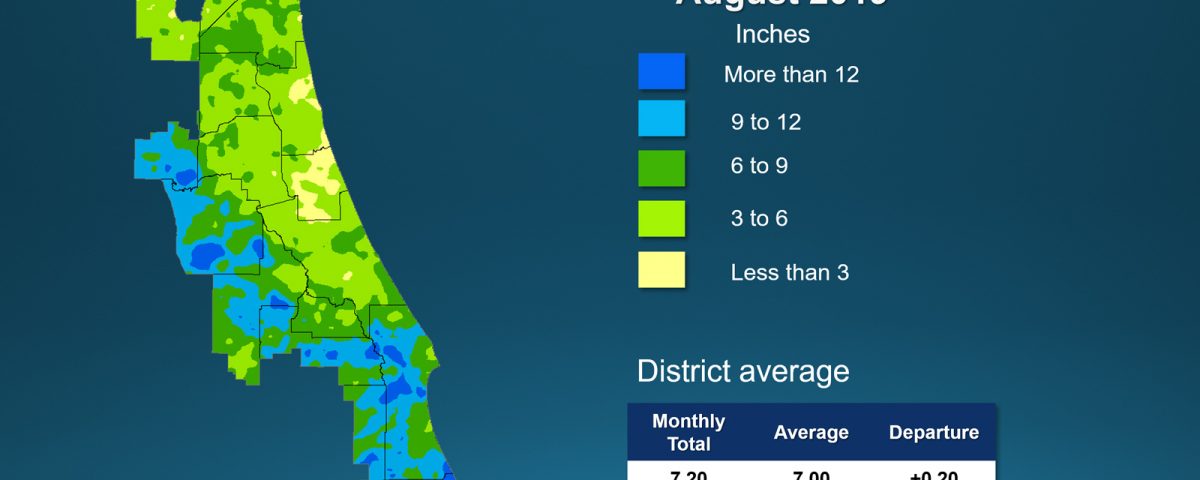Dry September creating drought conditions in north Florida

A map illustrates rainfall conditions across the St. Johns River Water Management District.

A map illustrates rainfall conditions in September across the St. Johns River Water Management District.
All 18 counties received below-average rainfall last month
PALATKA, Fla., Oct. 8, 2019 — Typically one of Florida’s wettest months of the year, this September was drier on average, according to data collected by the St. Johns River Water Management District, and drought conditions are developing in north Florida, with Baker County experiencing severe drought.
A full report outlining hydrological conditions was presented at the District’s October Governing Board meeting.
Every county within the District received well-below-average rainfall in September, and much of the rainfall was associated with Hurricane Dorian early in the month. Baker, Alachua and Nassau counties received the least rainfall, while Flagler had the most rainfall with 5 inches, still well below the average for September.
Alachua, Clay, Duval, Putnam and St. Johns counties are abnormally dry, while Nassau County is in moderate drought and Baker County is in the severe drought range.
Districtwide, the cumulative rainfall total over the last 12 months is 3.7 inches below the long-term average. The District’s southernmost and northernmost counties have the greatest deficit — both Indian River and Nassau counties have had only 40.5 inches of rain over the last 12 months. However, Marion County is still above average for the past 12 months, with a total of 56.7 inches of rainfall.
As a consequence of the very low September rainfall, surface water flows on Oct. 1 were much lower than at the start of September. The St. Marys River and the Wekiva River dropped into the very low flow range, while the Econlockhatchee and St. Johns River near Melbourne fell into the low range.
Other hydrologic highlights include:
- Lake levels in lakes Brooklyn, Weir, Winnemissett and Apopka decreased slightly. Blue Cypress Lake was slightly higher at the end of September compared to the end of August and is now below regulation level.
- Flow at Silver Springs increased by 20 cubic feet per second (cfs) to 760 cfs in September, while Rock Springs increased 1.5 cfs, with a mean monthly flow of 61 cfs. Volusia Blue Spring decreased by 12 cfs over the previous month, and flow at Wekiwa Springs increased by 1.4 cfs and ended September in the high range for the time of year.
- Upper Floridan aquifer conditions (groundwater levels) were in the normal to high range across most of the District
- Groundwater levels are in the 87th percentile, which means that only 13 percent of the time since 1980 aquifer levels are higher than they are now.
To learn more about rainfall totals, visit sjrwmd.com.

